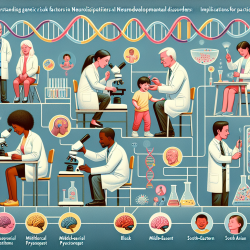Introduction
In the realm of speech-language pathology, understanding the neural mechanisms underlying verbal fluency can significantly enhance therapeutic outcomes. The study titled Neural Correlates of Letter and Semantic Fluency in Primary Progressive Aphasia offers valuable insights into the cerebral underpinnings of verbal fluency tasks in individuals with Primary Progressive Aphasia (PPA). This blog post aims to distill the key findings of this research and explore their practical implications for practitioners.
Key Findings of the Study
The study involved 35 PPA patients who underwent assessments for letter and semantic fluency tasks, alongside MRI scans for volumetric analysis. The primary objective was to determine the brain areas associated with verbal fluency performance, considering clinical and demographic factors.
- Letter Fluency: Predominantly associated with language severity, letter fluency correlated with the volume of the left superior temporal regions and the right dorsolateral prefrontal area.
- Semantic Fluency: Predominantly associated with dementia severity, semantic fluency correlated with the volume of the left inferior temporal gyrus.
The study concluded that letter fluency is significantly associated with the volume of frontal and temporal areas, whereas semantic fluency is mainly associated with temporal areas. Clinical severity was identified as a critical factor in explaining verbal fluency performance in PPA.
Implications for Practitioners
Understanding these neural correlates can aid practitioners in tailoring interventions for PPA patients. Here are some practical implications:
- Targeted Interventions: By focusing on enhancing language and cognitive functions associated with the frontal and temporal lobes, therapists can design more effective intervention strategies for improving verbal fluency in PPA patients.
- Severity Assessment: Incorporating assessments of language and dementia severity into routine evaluations can help in predicting fluency outcomes and tailoring therapy accordingly.
- Multidisciplinary Approach: Collaborating with neurologists and radiologists can provide a comprehensive understanding of the patient's brain structure, facilitating more informed therapeutic decisions.
Encouraging Further Research
While this study provides valuable insights, further research is needed to explore the dynamic interactions between different brain regions and their impact on verbal fluency. Practitioners are encouraged to engage in or support research initiatives that delve deeper into the neural mechanisms of language processing in PPA.
To read the original research paper, please follow this link: Neural Correlates of Letter and Semantic Fluency in Primary Progressive Aphasia.










